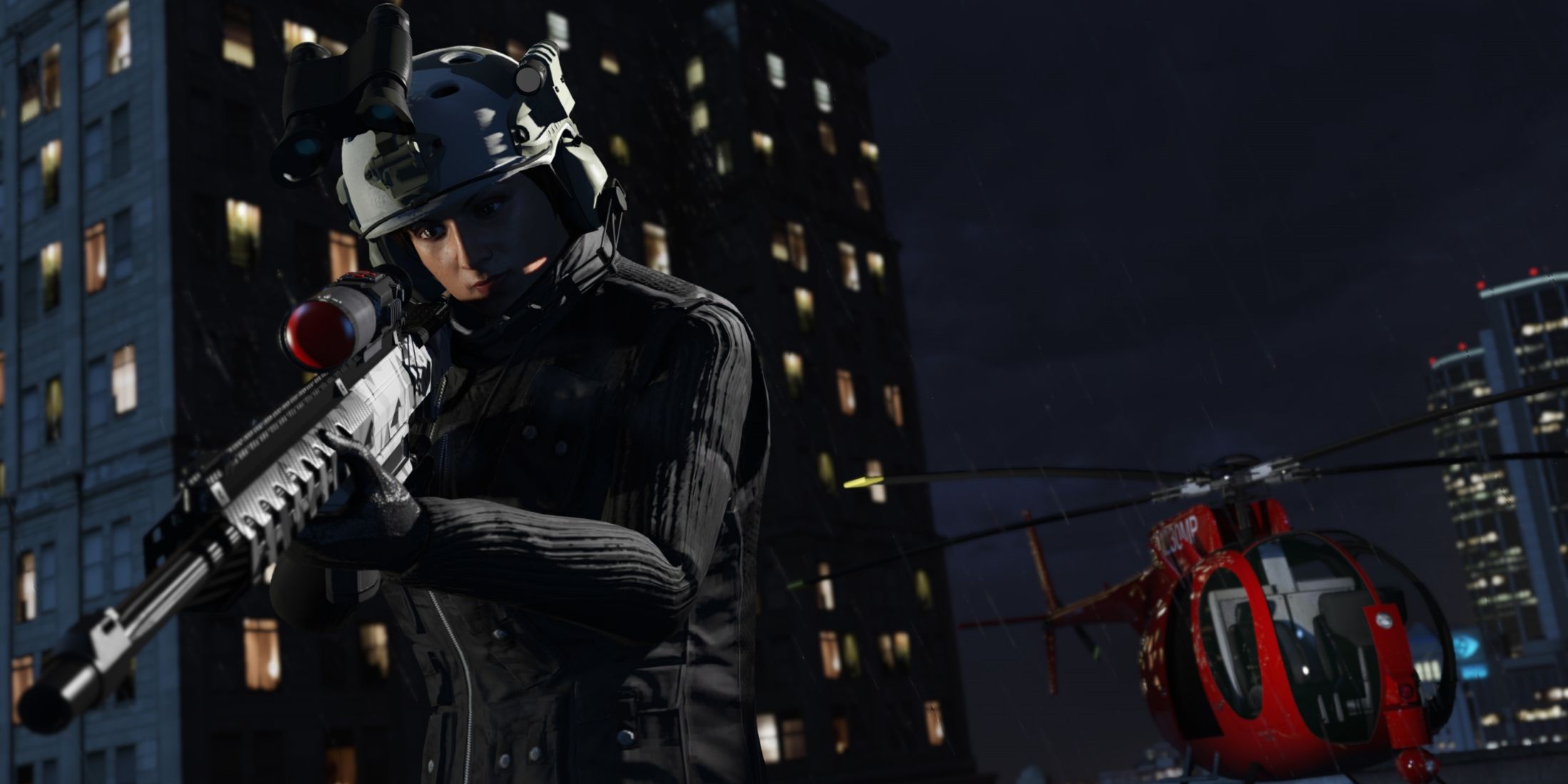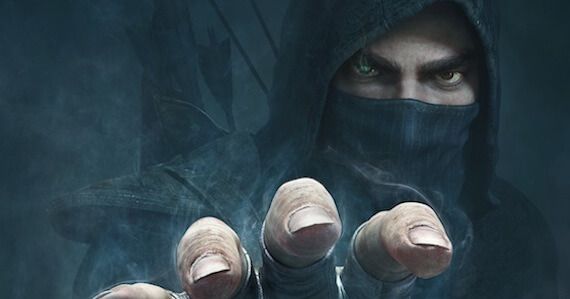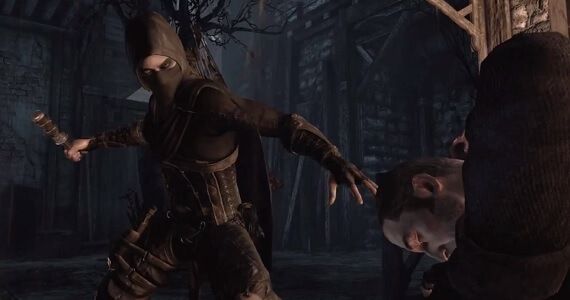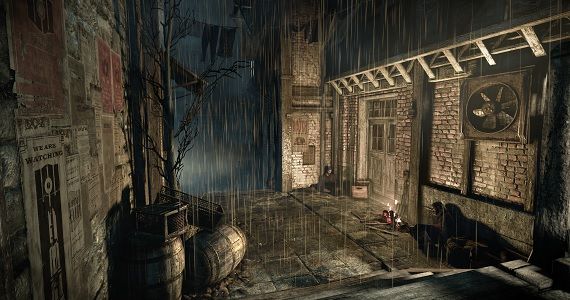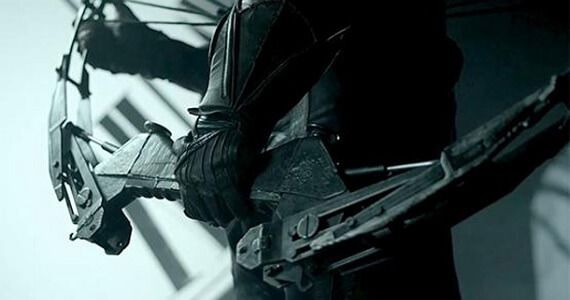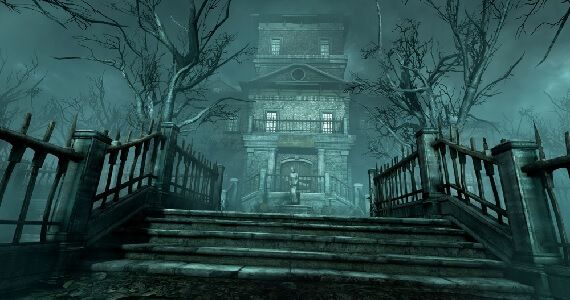Garrett the Master Thief is back! And he's suffering from the most fashionable of video game protagonist ailments: amnesia. After a prologue in which Garrett and his impatient ex-apprentice Erin break in all too literally on a mysterious ceremony being performed by the tyrannical Baron Northcrest, Garrett wakes up in a cart being carried back into the City, and finds out that he has been missing for a whole year.
Little does he know that it's actually been ten years since his last outing. Eidos Montreal was handed the substantial task of taking one of the most influential titles in the history of stealth gaming and trying to create a worthy followup. Was this mission a success? Not really, but it's better than no Thief at all.
These days it feels like most stealth games - Splinter Cell: Blacklist being just one notable example - seem to have stealth as merely an option, leaving plenty of room to accommodate players who just want to charge in, shoot everyone in the face and then get patted on the head with XP. Thief has its own version of this, classifying players as 'Ghost,' 'Opportunist' or 'Predator' depending on what type of stealth approach is taken (again, similar to Blacklist), but with Thief stealth is really the only approach. Try to face more than one guard head-on and you will probably die before they even break a sweat.
Even with silent, stealthy takedowns there is a sense that the game is silently mocking the player for not figuring out a way to simply sneak around the unsuspecting enemy. While other areas of Thief might be weak, the stealth is really where it shines: gently discouraging the player from taking the easy route of blunt-forcing their way through each level by offering tempting underground paths or routes through the rafters.
Even the darkness seems to take on a life of its own, with slices of shadow shifting and moving as guards walk past with lit torches, allowing Garrett to move with them. The enemy lines of sight are delicately crafted, so that instead of waiting for a guard to turn his back completely it's possible to just wait for him to glance away before swooping from one shadow to the next.
The gameplay mechanics themselves feel polished. Garrett moves with fluidity and grace, the sight of his hands hovering out in front when he crouches adding to the immersion. It definitely feels like inhabiting the body of a thief, especially when Garrett runs his spindly fingers over a bookcase in search of a hidden switch or silently slices a valuable painting out of its frame using a razor. Moving through the environments requires both patience and attention to detail, as rushing past a dog or bird cage can instantly break Garrett's cover, and moving too quickly over the wrong terrain will cause enough noise to alert nearby guards.
The City has its own unique style, and that style is dingy, dirty and gloomy. It's more or less what you'd expect from a city plagued by poverty and, well, plague, but the homogeneity of the streets has the unfortunate side-effect of making it incredibly easy to get lost. This problem is compounded by an in-game map that's a useless mess of inscrutable rectangles, and aside from tracking specific quests it's also not possible to set a custom waypoint.
Even this might not have been too much of a problem if the City's level design was a bit more friendly, but around every corner is a dead end or a loading screen. Apparently one of the "special taxes" levied by Baron Northcrest was a Door Tax, so most of the doors in the game have been rendered bizarrely non-functional, with neither handles nor locks. Some of the houses become magically unlocked upon accepting a specific side-quest from Basso that gives permission to break in, but for the most part Garrett will at best only be able to access one small room of the houses he invades and pick up a couple of minor trinkets.
The thing that really makes exploration a headache however, is the loading screens. Eidos Montreal's first project was Deus Ex: Human Revolution, but the world that's been created here feels more like Deus Ex: Invisible War. The City is segmented into a multitude of small districts and there is a loading screen between every single one. Sometimes the loading screen is hidden behind an innocuous-looking window, so instead of breaking into a house the player is unwittingly transported to another part of the City entirely. The frequency of loading screens quickly grew irritating on a high-spec PC where they lasted only a few seconds, so on a less powerful machine they must be painful.
Also, the developers apparently sunk all their character design dollars into Garrett, so the rest of the City is padded out with cheap clones. At several points it's possible to find the exact same beggar sitting next to himself, both men reaching out with identical, simultaneous gestures and identical blank expressions on their identical faces. Creepy.
While there is some good writing in Thief, it's not found in the main story. The plot feels like it was cobbled together from whatever was left over at the bottom of the cliché bargain bin. Reluctant hero? Check. Mystical, all-powerful glowing MacGuffin? Check. Damsel in distress? Check. Rich tyrant? Check. Rotund wise-cracking friend? Check.
At one point a character actually says the words, "We're not so different, you and I," before being drowned out by the sound of a thousand gamers facepalming. The story is essentially a disposable bit of fluff to keep Garrett - who has been saddled with the standard male video game protagonist personality (sardonic and slightly annoyed) and a generic gruff voice to match it - shuttling along from one location to the next.
Upon reaching those locations, Thief does pick up somewhat. The levels are mostly well-designed with plenty of loot for the taking and various points of egress to the buildings that need to be infiltrated. There is the requisite "scary" mission: the Moira Asylum, which is a transparent rip-off of the pants-wettingly scary Shalebridge Cradle chapter from Thief: Deadly Shadows, but unfortunately doesn't quite achieve those heights due to atmosphere being traded in for cheap jump scares. The Moira Asylum is nonetheless the most memorable mission in the game, mainly thanks to an effectively crafted and genuinely creepy dream sequence.
Another of Thief's strengths is the amount of customization available. Garrett's running commentary ("Hey! To solve this puzzle I need to press both buttons within a certain time limit! Did you get that?") can be switched off if it gets a bit too grating, as can the waypoints, the Focus ability, enemies' alert cues and many other game mechanics that hardcore players might find add too much hand-holding to the experience. The reward for making the game more difficult to play is extra points. You can then show the points to your friends and they will be impressed. Probably.
Though this might seem incongruous with the rest of the review, Thief is definitely a game that's worth playing. It gets a recommendation, despite the final score and its many, many, many flaws, because the stealth gameplay really is great, and with pure stealth games becoming such a rarity it's gratifying to find a game that really brings the art of thieving to life.
_____
Thief is available now for PC, PS3, PS4, Xbox 360 and Xbox One. This review is based on the PC version.
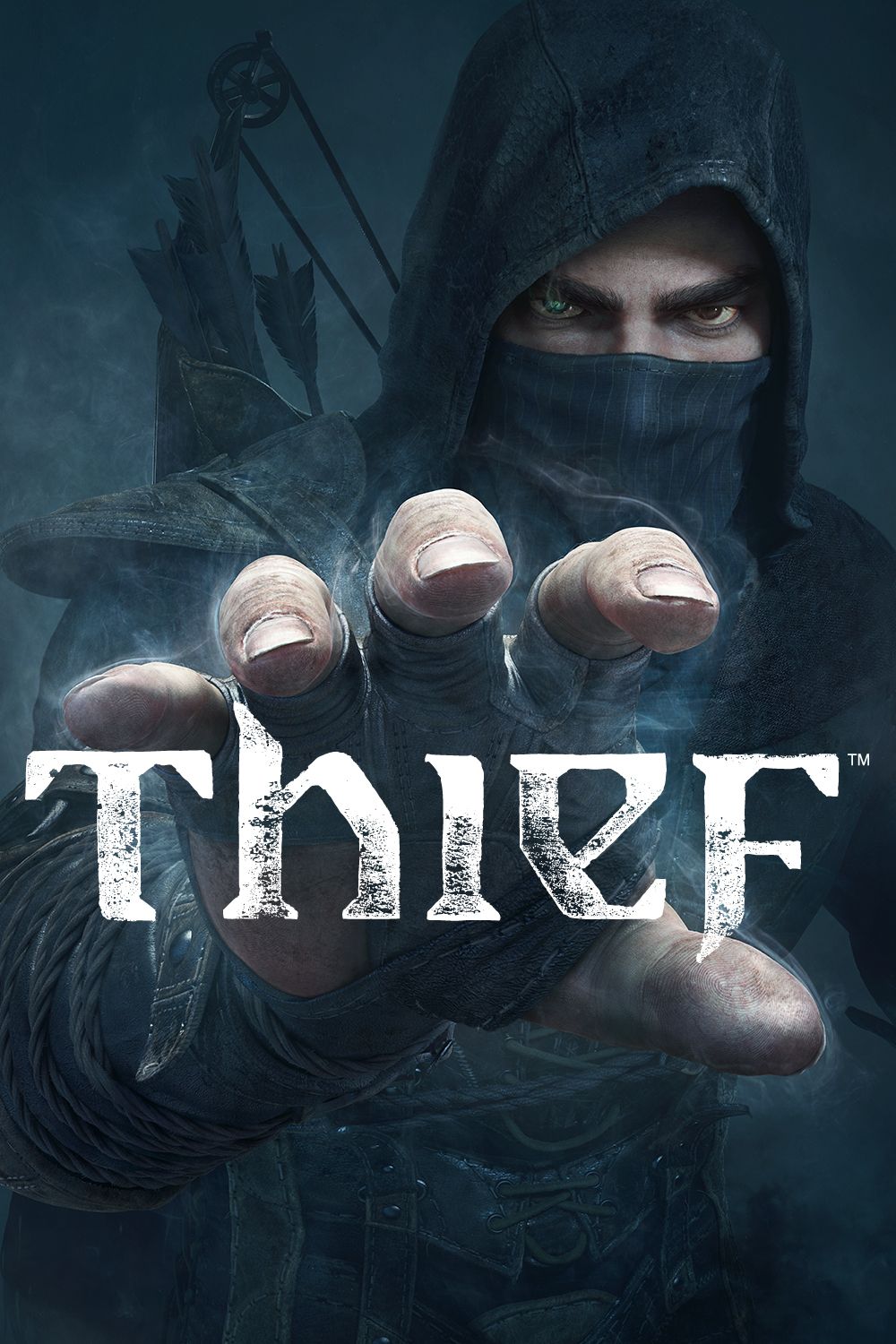
Thief


